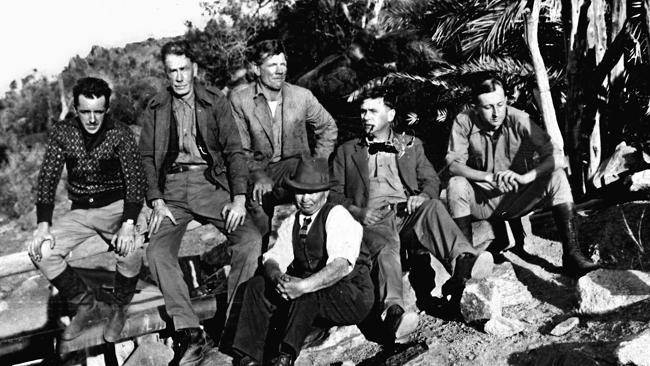Lasseter’s Gold: search for reef a sparkling story by Warren Brown
The failed search for Lasseter’s legendary gold reef has been pieced together with skill by Warren Brown.

Of all the great Australian hoaxes, none is more darkly absurd than the legend of Lasseter’s Reef. In 1930, a prospector calling himself Harold Bell Lasseter arrived at the Sydney headquarters of the Australian Workers Union claiming to have stumbled on an enormous gold seam somewhere near the MacDonnell Ranges. Though Lasseter refused to divulge the exact location of the reef, a well-financed expedition was organised by the AWU leadership.
In Lasseter’s Gold, Warren Brown, The Daily Telegraph cartoonist, TV presenter and vintage motoring buff (his previous book was a rollicking biography of eccentric outback adventurer Francis Birtles), has done a brilliant job in piecing together a coherent and convincing narrative from the welter of first-person accounts, some less reliable than others. He also draws on the often puzzling documentary record.
It seems almost everyone who became involved in the search for Lasseter’s Reef had an agenda, and indeed greed and paranoia flourished under the desert sun. Reading this absorbing account, I was reminded of the classic 1940s Humphrey Bogart film The Treasure of Sierra Madre, in which a combination of harsh environment, distrust and greed produce explosive conflict among a motley group of prospectors.
Lasseter’s Gold deserves to be made into a feature film and would make for an edgy outback noir. It certainly provides an excellent companion piece to Luke Walker’s superb recent documentary Lasseter’s Bones, which concentrates on the ongoing efforts by Lasseter’s 90-year-old son to find his father’s reef.
Given the sheer isolation, the physical difficulty of moving through the mulga country, and Lasseter’s vagueness about the location of the gold, which meant the 1930 expedition had no clear direction to follow, it is a wonder the whole enterprise did not disintegrate much earlier than it did.
As Brown notes, the story of Lasseter’s Reef has “many moving parts”. Several key people involved in the expedition seem to have been duplicitous if not downright malevolent in intent.
Brown leaves open the question that Lasseter was lying about the existence of a fabulous reef of gold, and that he may have been murdered by Paul Johns, a somewhat sinister German bushman later deported from Australia and interned in Britain during World War II as a Nazi sympathiser.
Lasseter, a man with a murky past as a petty criminal, con man and polygamist, was quite possibly lying or deluded. At the bitter end he may have been left deliberately by Johns to die in a desert cave, or perhaps he faked his own death and fled overseas.
In any case, no official investigation of the ill-fated expedition to find the reef was ever carried out, apparently because it would have revealed the sheer ineptitude and deceptive conduct at the heart of the doomed enterprise.
There have been many accounts of the 1930 undertaking, and the many subsequent searches for the gold, but few if any of these narratives are as grounded, in a quite literal sense, as Lasseter’s Gold. The author, who is an expert in vintage machinery and star of several television documentaries on motoring, focuses on the hardware the searchers used and the conditions they faced.
The main vehicle used to traverse the treacherous mulga country and shifting desert sands was a huge six-wheeled truck imported from England. The giant Thornycroft was touted as a state-of-the-art all-terrain vehicle. Among the other impressive equipment was a “portable” radio transmitter — three people were required to lift it — that was thought to be capable of sending messages from the most remote location. The expedition also had aerial support in the form of a biplane.
As things turned out, the Thornycroft was a fire hazard as well as being difficult to handle, the radio simply didn’t work and the aeroplane tended to crash on landing. The mind-numbingly slow progress made by the expedition party could be likened to a tanker convoy sequence from a Mad Max film viewed in extreme slow motion.
The journey to find the reef, which was conducted under the auspices of the grandly named Central Australia Gold Exploration Company, proved to be a folly as big as that of Burke and Wills, though without the heroic dimension.
Featuring the author’s own illustrations as well as a remarkable set of archival photos, Lasseter’s Gold is a compelling account of the weird outback adventure that was the unsuccessful original search to locate the Australian El Dorado.
Simon Caterson is the author of Hoax Nation.
Lasseter’s Gold
By Warren Brown
Hachette, 352pp, $35



To join the conversation, please log in. Don't have an account? Register
Join the conversation, you are commenting as Logout